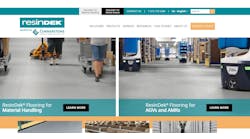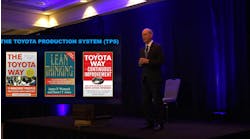While there are no magic pills to fix the manufacturing labor shortage, there is a path to attract and retain a more tech-savvy workforce. That path includes having a more employee-centric company culture, and, yes, leveraging technology.
But using advanced technology to solve workforce issues requires the manufacturer to have technology in place. This alignment of talent and technology has challenged many small- and medium-sized manufacturers (SMMs) for years. Among the hurdles that have kept them from investing in technology:
- They don’t have dedicated engineering resources for research and development and new product development
- They may not have expertise from outside their company keeping them informed about what is available or coming next in technology
- Integrators are not set up to work with SMMs – they are looking for a higher volume of work
Technology Can Have Big Benefits
Technology-driven manufacturing benefits more than just your operational output and efficiency. It also benefits your employees:
- Automation done properly makes a job physically easier and eliminates the need for people to perform dangerous repetitive tasks
- A learning management system with development plans and career pathways shows every new hire what professional development is planned and shows a window into where she or he could go in a career with the company
- A 3D-simulation before a new hire starts gives that person a low-risk opportunity to test for fit and can help to attract people who want to work with contemporary technology
While cost is a major consideration, there are ways to gain insights into the affordability of technology solutions and to de-risk the investment:
- Do research to be as impactful as possible; no need to invest time vetting high-tech industrial robots and artificial intelligence until a manufacturer is ready for that level of a solution
- Start with what is needed most right now and the marginal technology advancement needed to solve a current problem
- Use proof-of-concept trials to show the value of a particular technology
- Share the cost of equipment
The education process for technology also applies to company culture. Any manufacturer investing in technology will need to create a learning organization that values employee development, encourages sharing of ideas and honors the value of making mistakes and taking appropriate risks.
The Oregon MEP Center has developed an approach to leverage five technologies to help solve common workforce challenges:
- Cloud-based integrated operational excellence management system
- Augmented reality and virtual reality
- Industrial Internet of Things
- Collaborative robots (cobots)
- Simulation
How to Leverage Advanced Technology for Workforce Solutions
Cloud-Based Systems Provide Access, Transparency to Work, Training and Documentation
Software and hardware are not solutions without proper implementation, and a document platform is no different. But using a cloud-based program or approach can make it easier to manage your operation and provide transparency for how work is done, give everyone access to schedule and track training, and to offer visuals and roadmaps for career paths. Here are the categories the Oregon MEP uses for its cloud approach:
- Document management
- Standard work
- Training/LMS
- Quality Management System
- Continuous Improvement
- Total Preventive Maintenance
- Industry 4.0
On the workforce front, having more transparency and access throughout onboarding, training and career path development will help employee retention.
AR and VR Provide Experiential Learning For Many Applications
Augmented reality (AR) and virtual reality (VR) have many practical applications in manufacturing environments. The benefits begin with showing job applicants what a job entails and seeing if they will be able to do it. Other applications include:
- Demonstrating work instructions and practice for detailed tasks
- Training to expand skill sets, reduce potential errors and/or improve quality
- Testing for competency, such as with dangerous tasks
- Simulating emergency situations
AR and VR can also be used for facility layout projects and testing ideas of how best to configure work cells or utilize space. Historically, decisions may have been made by executives in offices, but now people on the shop floor can have more influence on their future work environments with 3D facility layout planning. This technology also can show how robots and cobots will work alongside humans, which can reduce stress about jobs being replaced by technology.
Put Technology in the Hands of People Who Will Be Using It To Capture Data
To rapidly teach companies about IIoT and find valuable use cases for the technology, the Oregon MEP has developed an “IIoT Education Box.” The shoe-box sized collection of 24 sensors connects to a cloud dashboard using cell service. The box is plugged into a power source, it wakes up and starts transmitting data from the sensors. A person can scan a QR code on their phone to get access to real-time data being collected, such as RH, temperature, barometric pressure, proximity, and particulate matter.
Curious people will engage with the box, learn about IIoT and identify use cases in their environment for adding sensors. Putting technology into the hands of people who will be using it can be a powerful tool to close the educational gap and increase adoption. They might suggest using a proximity sensor to count packages coming off a line, or an accelerometer to measure vibration in a machine and predict bearing failure. In one case, an employee suggested using sensors to automatically measure the temperature of cooking oil in vats instead of having employees do it at regular intervals.
Let Your People Do Value-Add Work While a Cobot Handles Repetitive Tasks
The Oregon MEP will provide a manufacturer with the use of a collaborative robot for a month-long test period before any purchase. This gives employees a chance to engage with the cobot, learn what it is good at and even try programming it. Given a chance to learn first, many employees thrive at putting cobots to work alongside them. Cobots excel at repetitive work – putting caps on bottles, bottles in boxes, boxes on pallets – as opposed to something like sorting a pile of various elements. A manufacturer might greatly benefit by having a cobot put material in chucks or products in a box so that employees can focus on value-add work.
Simulation Will Show New Employees a Better Career Path
Simulation is computer-based modeling to test almost any process, methodology or system in manufacturing. Simulation frequently is used for new product development, and it also can be used in the working environment to incorporate a new manufacturing cell into a facility, to determine whether to move large components or containers by cart or by crane, or to see how to adjust machine settings to change output rate or quality. Simulation is a big draw for recruiting and retention as the 3D-modeling provides engaging, creative work.
Your Local MEP Center Has Experts to Help You With Advanced Technology
The right technology at the right place adds value to your operation and will help you recruit a more tech-savvy workforce, but it is easy to get overwhelmed by the possibilities. The MEP National Network has a holistic suite of workforce development services that are tailored to the needs of smaller manufacturers. Contact your local MEP Center to talk with a workforce specialist about how to use advanced technology to solve your workforce challenges.
About the authors
Justin Gradek is a Senior Consultant for OMEP, part of the MEP National Network. He analyzes systems and business processes and specializes in technology adoption, including facility re-layout and virtual and augmented reality.
Tami Trout is a Principal Consultant for OMEP. She works with companies to maximize organizational success and profitability by developing effective human resources systems, workforce hiring and development, and performance management.






